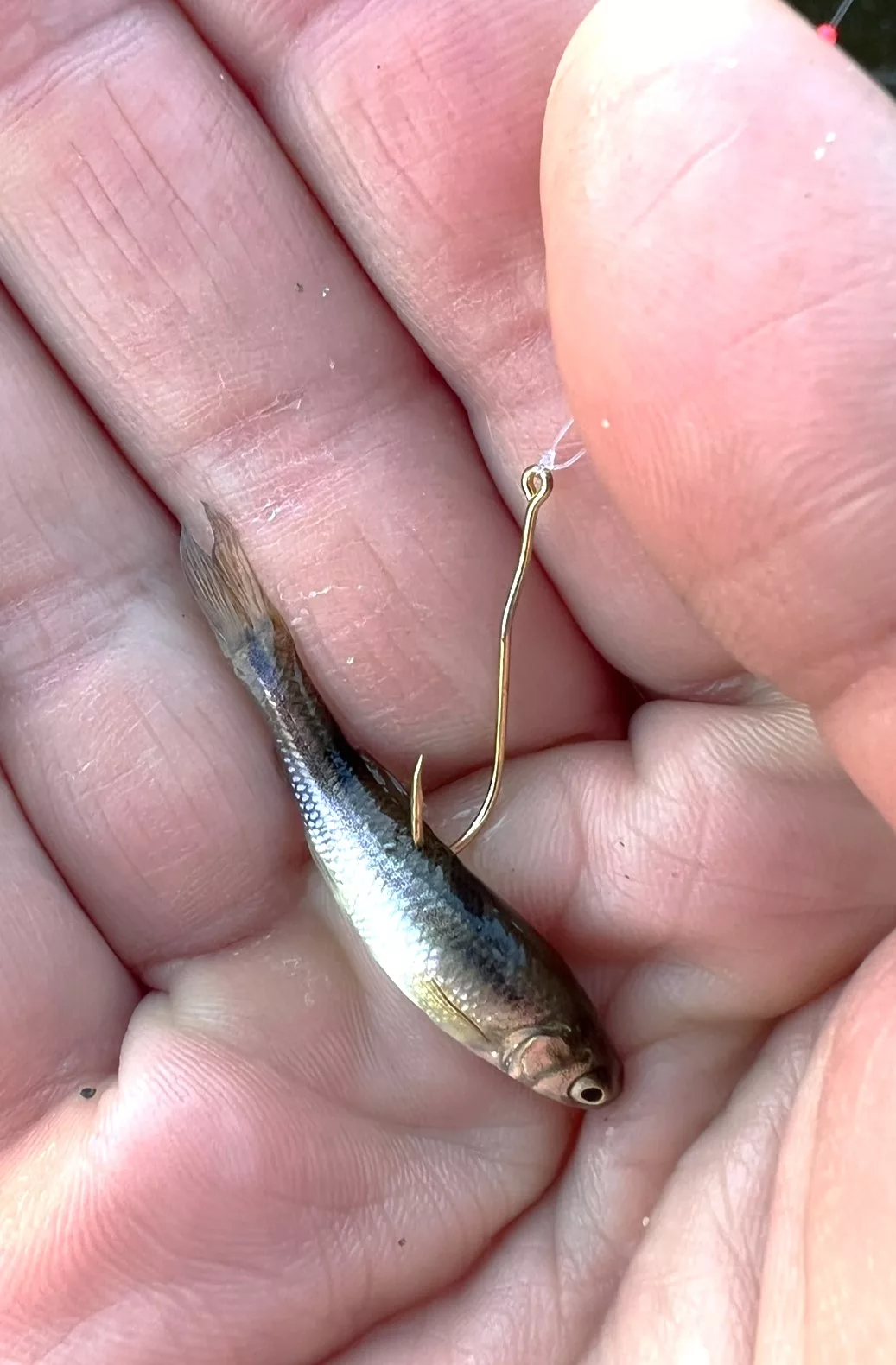
Well-worn gold. Even after a few dozen fish, a long-shanked Aberdeen hook proves its mettle, putting the bait where it needs to be and helping to prevent deep hooking. In turn, it’s easier to remove, does less damage and ensures cleaner releases, keeping the fishing action going smoothly. Simonson Photo.
By Nick Simonson
Long Bridge on Big Detroit Lake is a place that most anglers would refer to as a slump buster for its plentiful panfish. Even now, a week ahead of the walleye opener in Minnesota, it’s a destination because it’s a guarantee that something will bite in the waters along the concrete pilings of the bridge spanning the small gap between the main lake and the backwater bay. The clear column of water with just the right angle of sunlight easily gives up the location of the schools of crappies and bluegills lurking below, and sneaking under the bridge with my boys for an hour or so this weekend was the starting point to our fishing season in the land of 10,000 lakes.
Watching them explore the rocks, sand, and of course, decades of graffiti added to the concrete fishing area below, with names and initials carved into the old timber pilings which remains from the wooden version of the bridge from five decades ago, took me back to when I did the same at about their age. So too did the rig I had put together for each of them at the end of their light action rods, consisting of a slip float, a pinch of split shot, and a long-shanked gold Aberdeen hook. Well before I had mastered the more technical methods of jigging for panfish and certainly fly rodding them, the business end of their bobber rigs had been mine as well, with a spiral of nightcrawler often speared two or three times up the elongated shaft of shining gold.
Not knowing it then, but certainly with two boys to manage under the bridge and its low cement canopy made easier to navigate and avoid slight concussions by wearing my waders which allowed me to slink out into the water, I knew the chosen hook would come in handy now as well. In addition to that, as bobbers started to go down with greater frequency when the crappies, bluegills and rock bass began to bite with regularity in the warming morning, it brought back memories of my younger days of fishing, as I easily leveraged the extended shank from the mouths of the willing biters in the spring waters before us, only reaching for my pliers once to tweak it from the hard part of a rock bass’s jaw.
While I had quite a few options for hooks in my panfish box, I knew that the Aberdeen would be the best choice for keeping things going smoothly, as it was far harder for the fish to inhale the entire offering of the minnows held at the bend when compared to the #6 red octopus hooks and even the 1/32-ounce jigs, which even a small bluegill could manage into its gullet with a big inhale. Though it may have been the reason for a few missed fish, the hooks made those that they did catch easier to release, and was a fun reminder of what angling should be about – sideways bobbers being pulled like a tug-of-war flag as a fish comes in, and a surface broken by silver splashes of favorite springtime pursuits such as the crappies that came to hand.
While I ran from rod-to-rod, and helped cast the slip float rigs into position between the pilings in front of us, I thought back to the trips I had taken to Long Bridge in the past, when angling wasn’t so technical, and a can of dirt and earthworms from the back patch of woods at the cabin and a shimmering gold hook was all it took for a day of fun chasing panfish and keeping the action going smoothly…in our outdoors.
